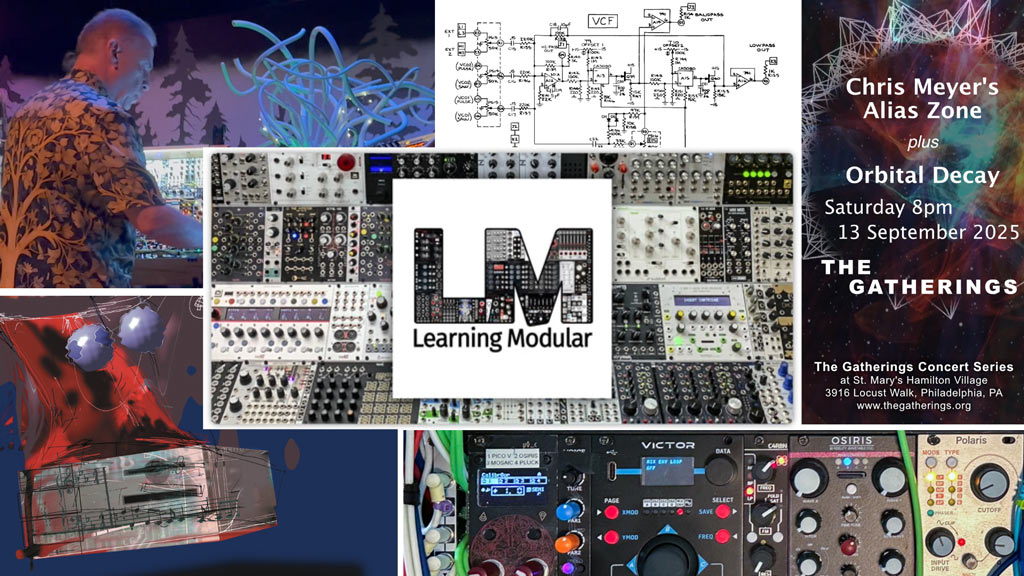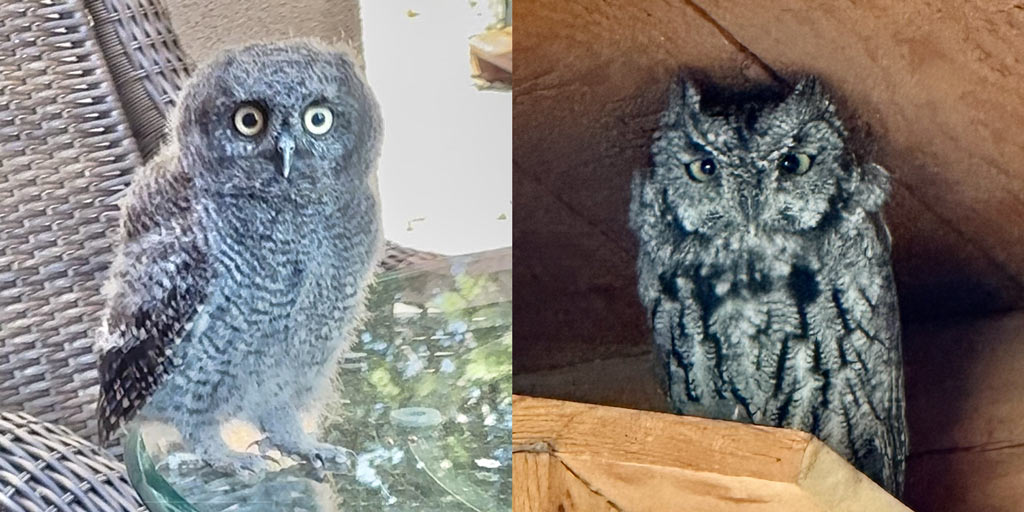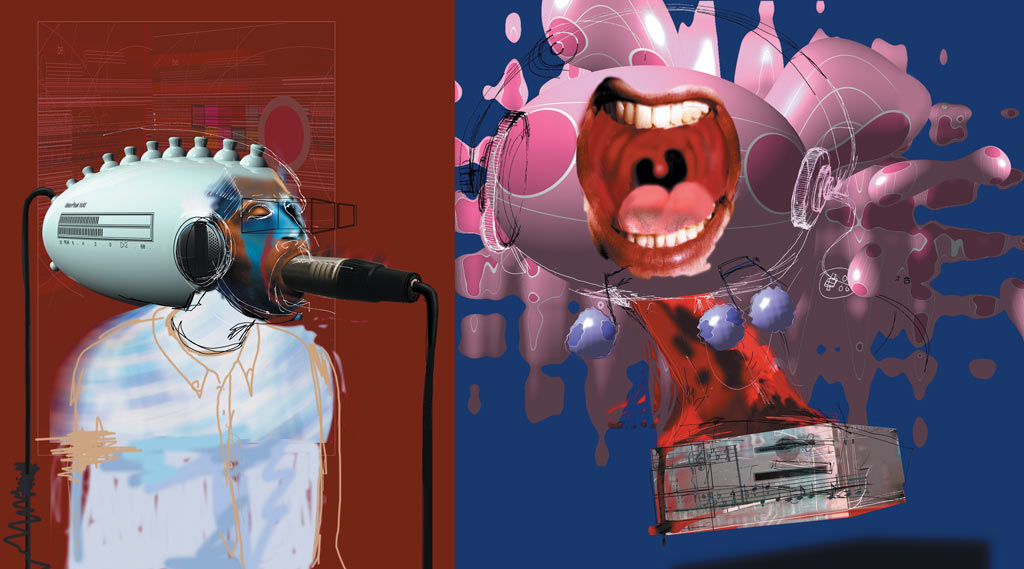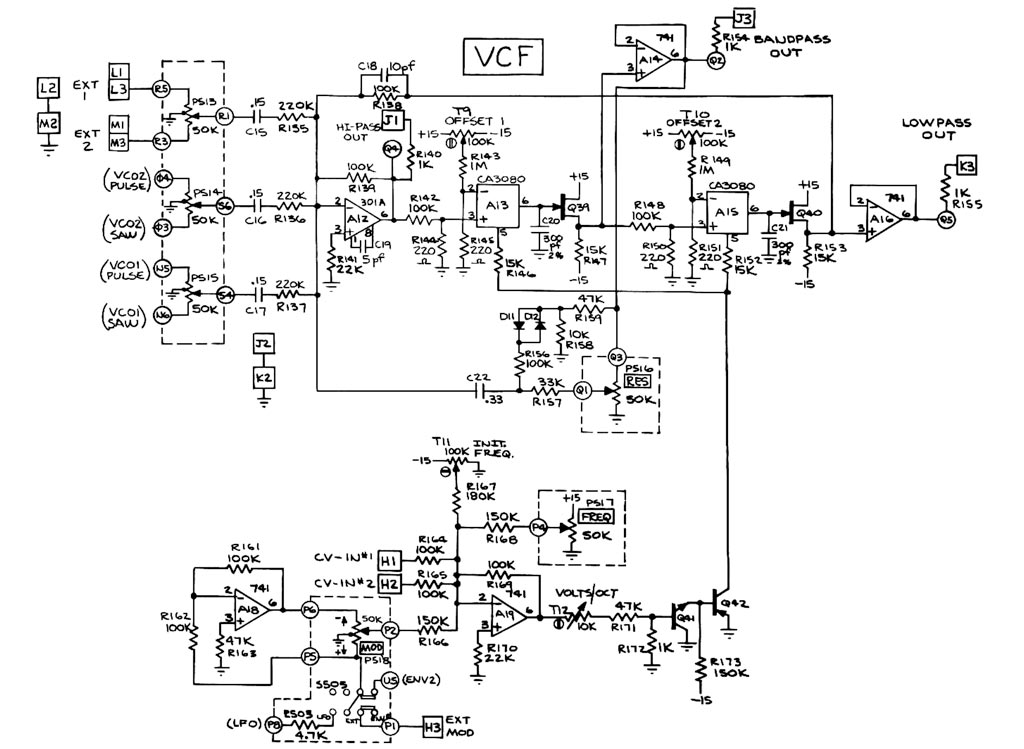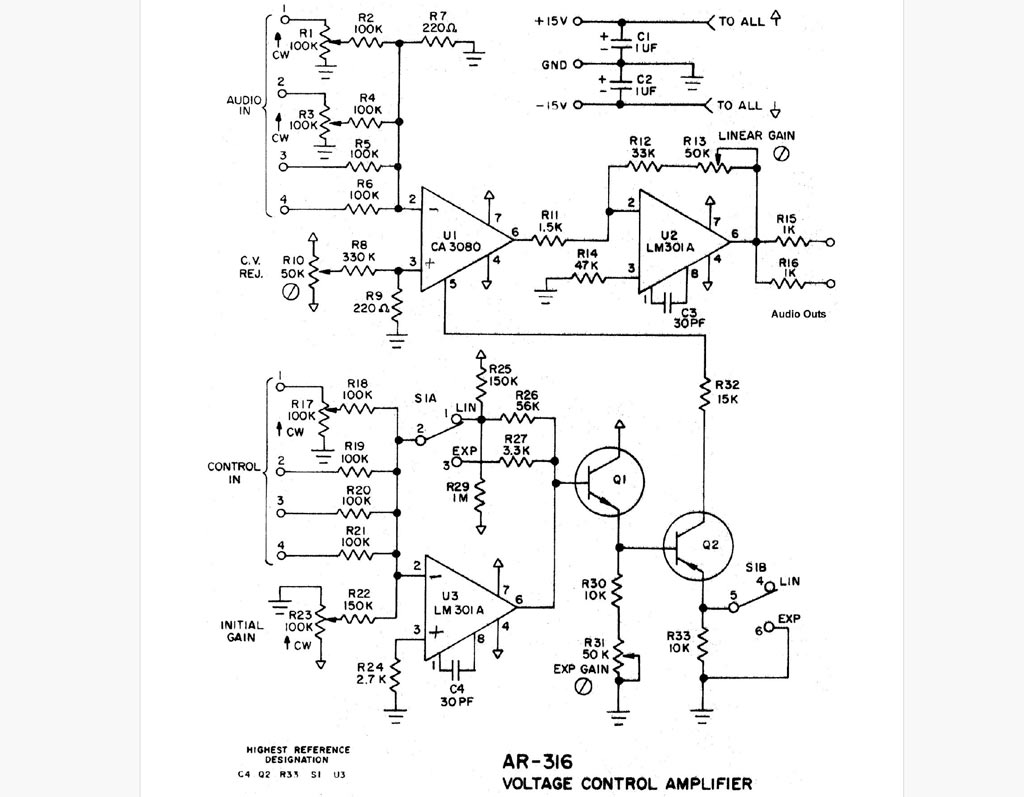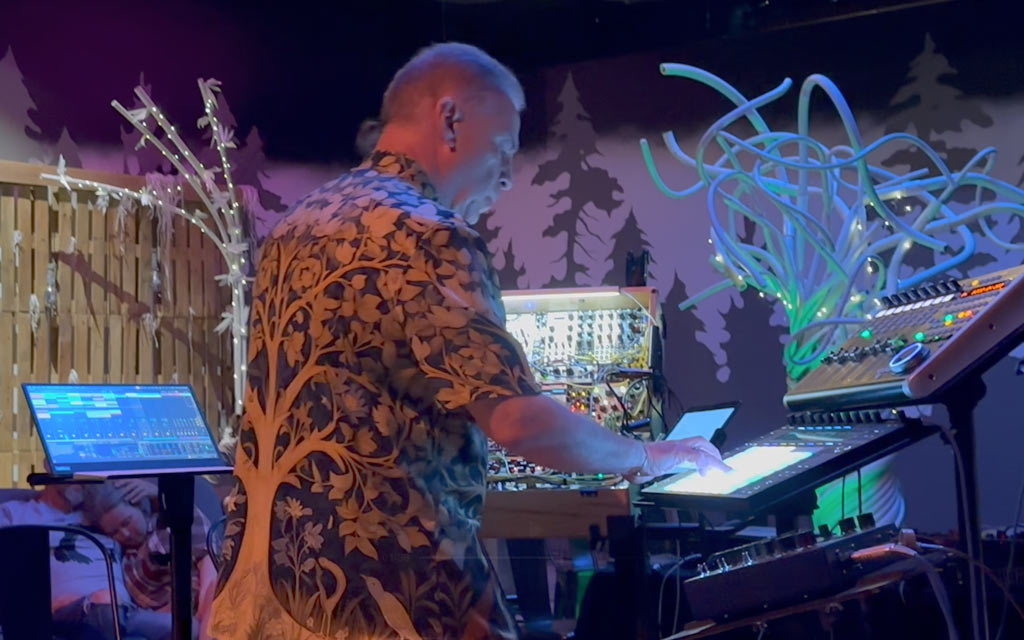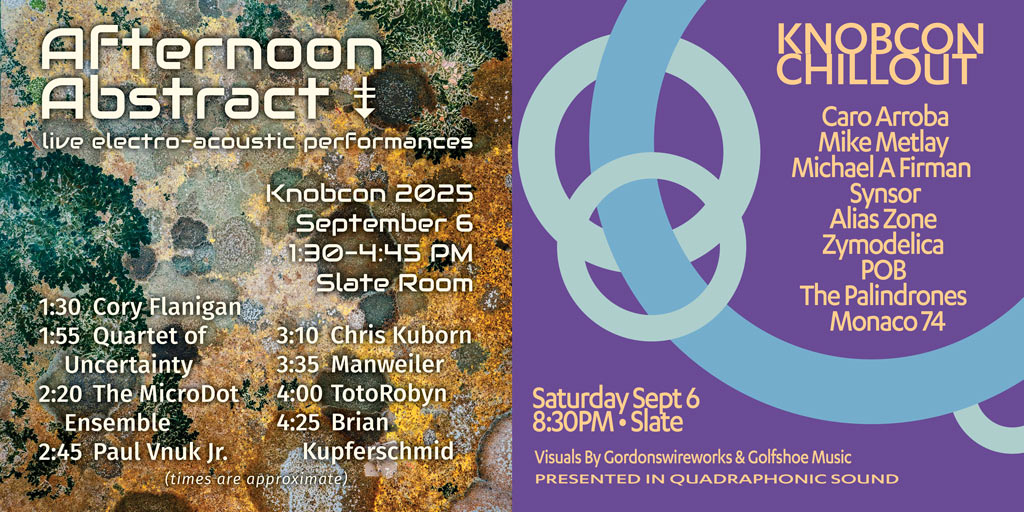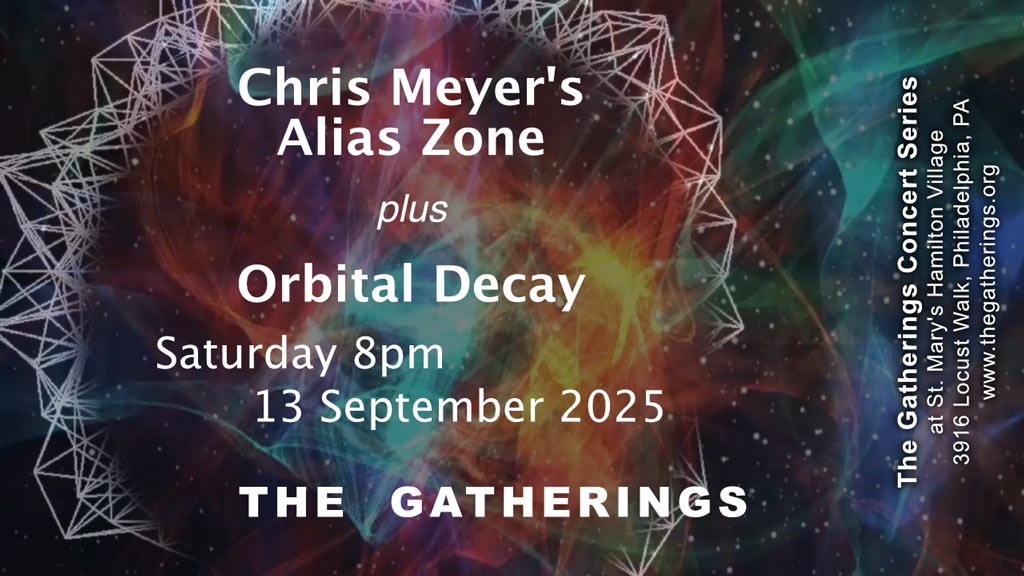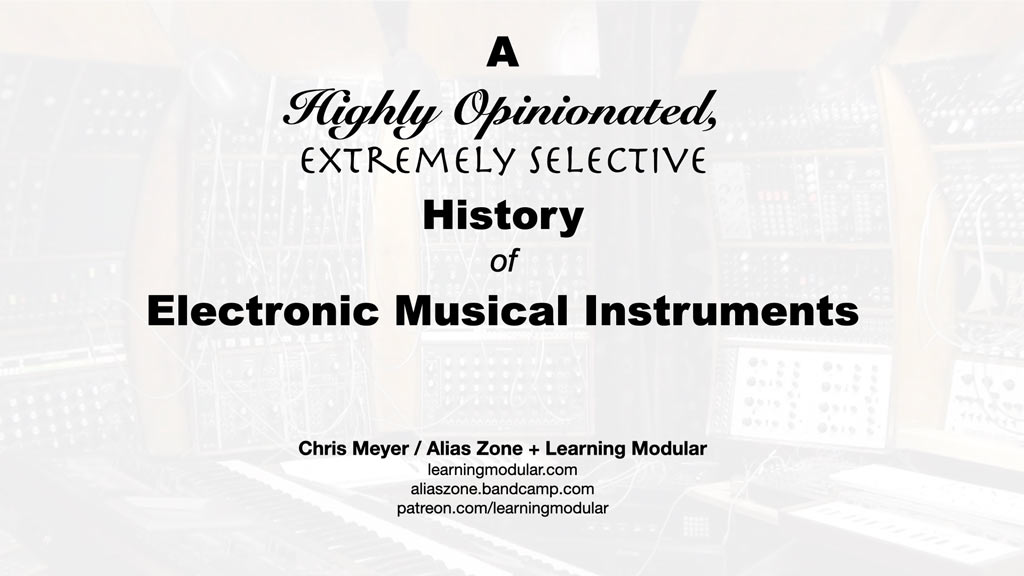July was dedicated to finishing and releasing my new album, Paradise Lost. August has been dedicated to preparing for a number performances and talks I’m giving over the remainder of this year – and I still have to finish rehearsals and pack! So let’s jump straight in:
- featured article: A disproportionate number of new modules and plugins are dedicated to distorting sound beyond recognition…when just a bit of saturation may be all you need. I give several examples of prized synthesizers and mixers who can credit their sound to only moderate analog imperfections.
- Alias Zone updates: My new album Paradise Lost has finally been released. Get a look at its CD artwork, and read some reviews from my fellow musicians.
- Learning Modular updates: The video of my interview on Bobby Owsinki’s Inner Circle Podcast, plus a couple of upcoming talks about the history of electronic instruments.
- Patreon updates: I gave some historical context on machines from the 1950s to 1970s designed to compose music (early AI!), plus two updates on my live performance system that I will be touring with the remainder of this year.
- upcoming events: I have a slightly ridiculous number of concerts and talks coming up before the end of the year – this summarizes all of them.
My wife and I have also been preoccupied acting as…godparents?…to a baby Western Screech Owl we’ve named Gizmo. S/he was born in a nesting box on our front porch earlier this year, and has come back to sleep through the day in or on top of a roosting box on our kitchen porch. Below is a photo of when Gizmo fledged (first flew out of the nesting box) on June 8, and perched on top of that roosting box on August 31. They grow up so fast!
All Things in Moderation – Distortion Included
In these polarized times, when people prefer to stake out extreme positions, I suspect I am going to upset a lot of people…by taking a moderate position.
Some people like to make their recordings as clean, pristine, and precise as possible.
Some people like to distort their sounds in insane ways, going for extreme filth with loads of sharp edges.
But I think there is a lot to be said just a bit of warmth: a touch of saturation; a last-century analog vibe just to round off the corners a bit.
And I am not alone. Some of your favorite synthesizers and mixers have taken this path, as well.
Moog Minimoog
That famed Minimoog warmth? That’s saturation – with a not-insignificant part of it being a side effect from trying to fix another problem, as documented in The Minimoog Book by JoE Silva.
During work on the Minimoog Model C (precursor to the publicly sold version, the Model D), it was discovered that there was a lot of noise present in the signal. To improve the signal to noise ratio, they kept cranking up the level to the VCF and VCA until they were happy that the noise was buried. In the process, they overdrove those components. Rather than hard-core distortion, the end result was more like warm saturation; that’s why the engineers didn’t really notice a downside when trying to bury the noise.
(Also, few realize that there are actually two VCAs in series in the output section of the Mini – one for the synth voice, and one for a seldom-used expression pedal connection on the back. We’ll revisit the effects of multiple VCAs in series in just a little bit…)
The folks at EMEAPP made extensive research into the distortion created by different sections as well as versions of the Minimoog. A YouTube playlist of videos they created is embedded below; if you have registered with EMEAPP online, you can access a series of papers on the subject here.
Oberheim SEM
Moog wasn’t the only synth company to go down the saturation path. When Tom Oberheim had the idea for his Synthesizer Expander Module (the SEM), he had help from several people: Dave Rossum of E-my Systems designed the VCO, Dennis Collins of ARP and Aries designed the VCF, and Jim Cooper of JL Cooper (and an early Oberheim employee) designed the LFO and EG.
When he put all of the components together, Tom wasn’t satisfied with how the final result sounded, so he tweaked component values until his ears were happy. This included slightly overdriving the filter; the schematic for it is below:
(Tip: The Doepfer version of the SEM filter is currently my go-to VCF to warm up the sound of wavetable oscillators without drastically changing their character.)
A bit of trivia: Tom Oberheim continued his practice of using his ears with his Marion Systems MS-9C 16-bit sampling and playback retrofit he created for the Akai S-900 and S-950 samplers, adding some light saturation to the input preamp(!).
Aries VCAs
Going back to Dennis Collins and Aries, I have a cabinet custom-made by Gentle Electric in the late 1970s which consists mostly of VCAs built by ex-Aries employee Carl Fravel using the Aries AR-316 design, including CA3080 OTA chips. Here is the schematic:
I often use it to warm up sounds a touch (plus remove a bit of the attack “click” from fast envelope generators, if that click proves to be more distracting than useful). Yes, their signal to noise ratio is only in the 70dB range; I use noise gates or downward expanders in my DAW to quiet them down when they’re not playing.
SSL Analog Mixers
Speaking of VCAs, one of the features of the famed SSL mixing consoles was that channels could be automated, as well as have their own compressors. This required a lot of VCAs, which were known to color the sound a bit in the earlier models. SSL is now known for pristine sound, but I have found the software emulation of their old 4000 B channel strip “just sounds better” to my ears than the more clinical 4000 E or G emulations.
Even the pristine sound of current SSL analog boards still have a touch of that prized yet elusive “analog sound.” I’m an engineer, so if you make a claim that sounds dubious or overly reliant on magic, I won’t immediately shut you down – but you do need to prove it to me.
When I got an SSL BiG SiX analog board with digital interface, I ran my own blind test on a variety of sounds – and although it was subtle, I picked the version that was passed through the SSL every single time – even with no EQ or compression engaged. So now as part of my final mixing process for an album, I run every single track through the SSL to add that tiny bit of “analog magic” to them.
Moog CP3 Mixer
Continuing with the mixer theme but coming back to synthesizers: The Moog CP-3 mixer is claimed to add a “special something” to the sound of the original Moog modular. Upon study, it has proven to have an asymmetrical effect on waveforms passing through it: When driven hard enough, it clips one side of the voltage swing and not the other, which adds more “warming” even harmonics than clipping both sides the same. I even created an article plus video about it on the Learning Modular website years ago.
(Tip: I’m surprised how good CP3-based mixers sound with percussion modules!)
Choose Your Distortion Carefully
Not all attempts at adding distortion in the name of warmth succeed. I’ve heard a lot of Eurorack modular mixers in particular which just sound nasty when overdriven. Similarly, overdriving the inputs of various filters will give uneven results: some do impart desirable, warming saturation, but too many add a thin buzz which just sounds cheap. If you’re already a Patreon subscriber, I created an article and video about the overdrive characteristics for a number of Eurorack filters.
I do love the crunch and power of a distorted electric guitar. And I do record at 96 kHz/32 bit with high-quality cables and power supplies to capture my instruments as cleanly as possible. But a premise from an old Star Trek episode has stuck with me: It’s far easier for a civilized person to act like a barbarian, than for a barbarian to act as a civilized person.
Therefore, I like to have a clean starting point, which I can then “degrade” as necessary to get the end result I desire. And quite often, that end point has just a touch of saturation or analog warmth to it, instead of the several million flavors of extreme distortion that have become so popular in the modular synthesis and software plugin worlds.
Alias Zone Updates
My latest album Paradise Lost is finally out, and it’s my most rhythmically-infused release yet. In addition to digital downloads and streaming on Bandcamp, I created a six-panel DigiPak Lite physical CD version as well; the CD package artwork is above.
Of course I’m going to tell you it’s great. But maybe you’d put more faith into what some of my fellow musicians have to say about it:
“With Paradise Lost, Chris Meyer’s Alias Zone contributes an important evolution to the language of cinematic, emotional, organic electronic music. Sweeping melodic and rhythmic arcs, dynamic surprises and orchestral motility combine to reward active listening, while painting an earthbound landscape of broad-brush vistas and wide open skies.” – Robert Rich
“It’s an electronic music soundtrack for the mind…” – Craig Padilla
“Rife with organic textures and earthy elements, the album is interwoven with asymmetric, organic percussion, offset brilliantly against emotional chord progressions and Meyer’s intriguing synth lines, which evoke mystery as well as intense, focused energy. This one is not to be missed.” – Hollan Holmes
“This is my fave work of yours! Great, amazing, and personal music. Excellent production as well. A brilliant listen.” – Jeff Rona
“Cinematic and extra-worldly, each track inspires the listener to close their eyes. To think. To feel. To travel through the mind to a place where compassion is the lead instrument.” – Cynthia Malaran (aka DJ CherishTheLuv)
“Chris has outdone himself this time – this is an amazing record, one that will stay in your ears and your heart for a good long while.” – Mike Metlay
“Paradise Lost weaves together a story of a quiet yet powerful rebellion against entropy and decay. It takes listeners on a powerful journey, blending intricate soundscapes, beautiful rhythmic timbres and emotive melodies: from flying through the pulse and breath of a storm to feeling the presence of an early dawn on a desert landscape, melting the past away. It is deeply engaging and precisely crafted balance between complexity and simplicity that blend into an evolving flow of patterns and rich textures that form the thematic melody. An album not to be missed.” – Bart Hawkins
I had a great album release party and performance at Prismajic in Denver in July (thank you Luigi’s Modular Supply for putting that on!), and I am focusing on further concerts supporting its release through the end of this year – see the Upcoming Events section below. Then I will start spending time creating the Atmos mix version of it, plus start working on the next albums.
Learning Modular Updates
Above is a fun interview I did with recording industry legend Bobby Owsinski that covered a broad swath of territory, including synthesizers, studio construction, immersive sound, and more.
During September I’m giving two versions of a talk on the earliest days of electronic musical instruments and the music created with them, dating back to 1874 – and comparing how relatively young they are compared to traditional acoustic instruments. The first one will be on Wednesday September 10 at EMEAPP and their new public-facing Museum of Music Technology near Philadelphia, Pennsylvania; the second will be on Sunday September 21 at the Sigal Music Museum in Greenville, South Carolina. Details for both are in the Upcoming Events section below.
Patreon Updates
My Patreon channel covers live performance, studio, and compositional ideas in addition to – of course – modular synthesizer patching tricks. Here are some of the new posts I’ve written since the previous newsletter:
- Early AI Music Attempts: Following up on the previous newsletter’s featured article on AI in music, I detailed a few actual machines created to automatically create music that date from the 1950s through 1970s, including RCA’s Electronic Music Composing Machine, Raymond Scott’s Electronium for Motown, and the Triadex Muse (that last one being featured in the video above).
- Improving My Live Performance Part 8: Switches for Presets: This is a greatly expanded version of a short article I wrote previously on how I am using switch modules – from simple mechanical toggle switches to electronic ones – to help me quickly change sounds during live performance.
- Improving My Live Performance Part 9: Reconfiguring for Multiple Performances: My most recent post covers other modules changes and additions I’ve made to my live performance modular system to be able to handle longer sets with a wider variety of sounds, as well as some compromises I’ve had to reach on aesthetics and functions-per-module.
All three articles are for +5v and above subscribers – but I have some good news: You can get free access to all of my articles for one week in exchange for trying out my Patreon page at the +5v subscription level. Here is the list of roughly 500 articles you will above access to – so get reading! I’ve also restored the annual subscription option; it’s like getting 12 months of access for the price of 10.
Upcoming Events
September 6, Knobcon Chill-Out Room, Schaumburg, Illinois
At the annual Knobcon trade show, I curated the performers for and will be introducing them during the Afternoon Abstract program. Then in the evening I will be playing as part of the Chill Out performances, premiering a new ambient piece I’ve been working on. There are a lot of wonderful acts between the two; I hope you can make it.
September 10, EMEAPP, 7:30 PM, Harleysville, Pennsylvania
I will be giving a talk about the evolution of electronic musical instruments and the music made with them, dating back to the 1870s. EMEAPP has an amazing collection of historic electronic instruments, and will have several of them available for attendees to see up close! Seating is limited. Tickets are $50, and include free registration to my Learning Modular Synthesis online course – a $79 value. (If you choose to buy a ticket just to get the course at a discount and won’t actually be attending, that’s okay; you’re still supporting a good cause. Just let EMEAPP know so they can free up the physical seat for another potential attendee.)
September 13, 8 PM, The Gatherings, Philadelphia, Pennsylvania
I am very proud to be part of The Gatherings concert series this fall at St Mary’s Hamilton Village, 3816 Locust Walk, Philadelphia. Orbital Decay will the opening act, and then I will play an extended set with music from Paradise Lost as well as several new pieces. Admission is free; donations are requested. I will also have CDs for sale at a great price. And if you can’t make it, it will be live streamed at this link.
September 14, 2-3 AM EDT, Star’s End Radio
When I am done with The Gatherings, I pack up and move to WXPN radio and play a live set on Chuck Van Zyl’s famous Star’s End radio program. I will be performing a pair of extended ambient remix/deconstructions of new pieces played at The Gatherings, followed by an encore performance of the track Paradise Lost. This will be streamed live on YouTube.
September 21, 3-4:30 PM, Sigal Music Museum, Greenville, South Carolina
I will be giving another talk about the evolution of electronic music instruments – particularly in the context of acoustic instruments (of which the Sigal Music Museum has an amazing collection), which have been around for much longer. I will also be putting on an ambient performance before the official program at 3, and both explaining and demonstrating my hybrid performance system at the end of my talk. Click here to register; the talk is free.
October 10-11, 7:30-9:30 PM, Wavetrails Festival, Albuquerque, New Mexico
Last year, I had the honor of playing on the opening night of the inaugural Wavetrails Festival – part of the larger Rising High Arts Fest – in Albuquerque, New Mexico during their annual Balloon Fiesta. The first Wavetrails had standing room only both nights (and sold out opening night), so we’ve been upgraded to a bigger space, and will be staging more events, including talks and exhibits on Saturday afternoon, plus dance parties at night. I will be playing on opening night again, in quadraphonic sound with video projections. Clicking the link above will take you to last year’s Wavetrails web site for now; it will be updated as the date gets closer.
October 29, 7:30 PM, Chapman Hall, Colorado Springs, Colorado
I will be performing an extended solo concert in the lovely Chapman Foundations Recital Hall on the University of Colorado Colorado Springs campus. Before I start, there will be a Q&A with Dr. Jon Forshee of the UCCS music department. This link takes you to their overall Events page; I will add a more direct link on the Alias Zone website once it is available.
December 6, 7:30 PM, Fusion 708, Albuquerque, New Mexico
The new duo of Trey Gunn and David Forlano will be holding an album release party and concert for their debut effort – and I will be the opening act! You will also be treated to quadraphonic sound in an “in the round” environment, with video projections by John-Mark Collins of Wonder and Light. Click here for tickets.
And in 2026…I sleep. (And do more studio work…)
I’m part of one more big online “event” in December, which I’ll tell you all about in the next newsletter. Until then, stay sane, and be creative.
channeling that “owl magic” –
Chris

